
The andiron or ‘fire dog’ is a key feature of the fireplace that has existed since Ancient Greece
Fires can be lit on the floor of a fireplace – but for thousands of years we’ve turned to andirons to elevate them off the ground. These metal stands support logs, improve air circulation and create a healthy draft, producing a brighter, hotter fire.
Andirons are among the most ancient of fireplace tools. The first date back to Classical Antiquity, and they were commonly used by the Late Iron Age. Usually appearing in pairs, they stand on short legs with a vertical guard bar at the front to prevent logs from rolling off. This four-legged look led to their alternate name, ‘fire dogs’ (another reason may be the French for andiron, chenet, ‘little dog’).
Besides their role in heating, andirons have been used for cooking for centuries. Since the sixteenth century, meanwhile, their increasing ornamentation has led to a new status as decorative objects.
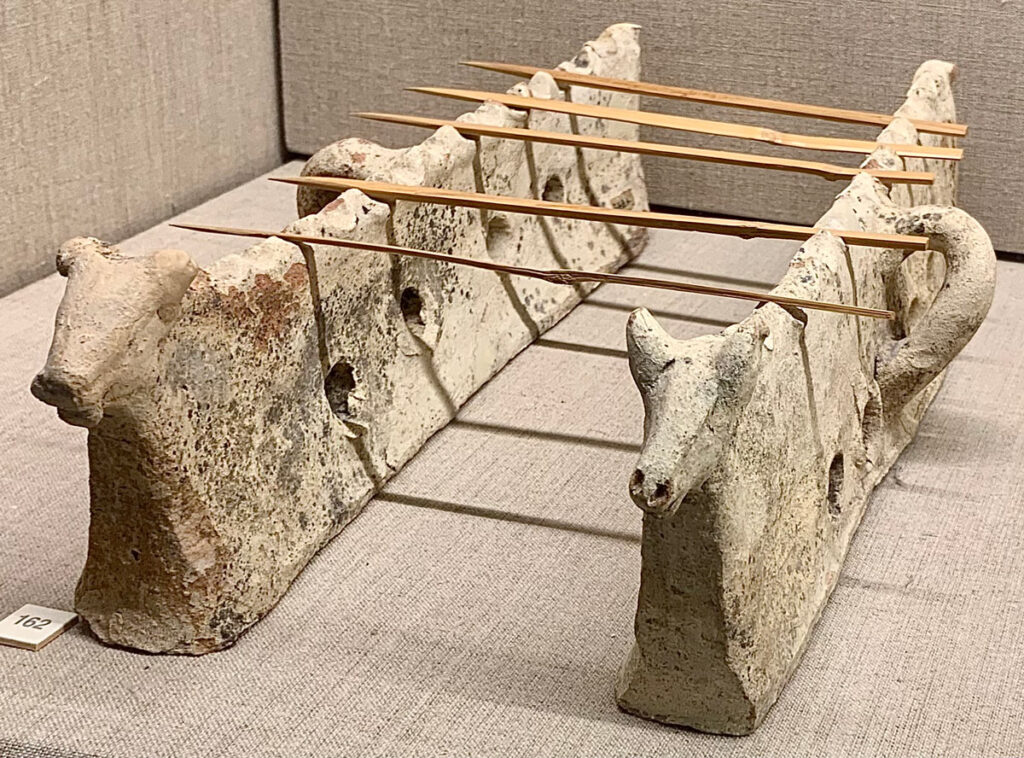
The first sparks
Andirons were used by the Ancient Greeks, who knew them as krateutai; excavations on the Greek island of Santorini have unearthed stone firedogs dating from before the seventeenth century BC. In antiquity, andirons were also referred to as moon idols (or moon horns) and may have been cult items in Early European religions: examples resembling horns or crescent moons seem to suggest a role in bull or moon worship. They may more simply have held logs as part of fire altars.
The evolution of andirons echoes that of the fireplace, altering according to current fashions and the available technology. Before the fourteenth century they were almost always forged from wrought iron and were comparatively plain, often consisting of a single bar between two tall ends. Medieval andirons tended to be high, with slots at the front for placing spits for roasting; in later periods similar styles remained in use in kitchens.
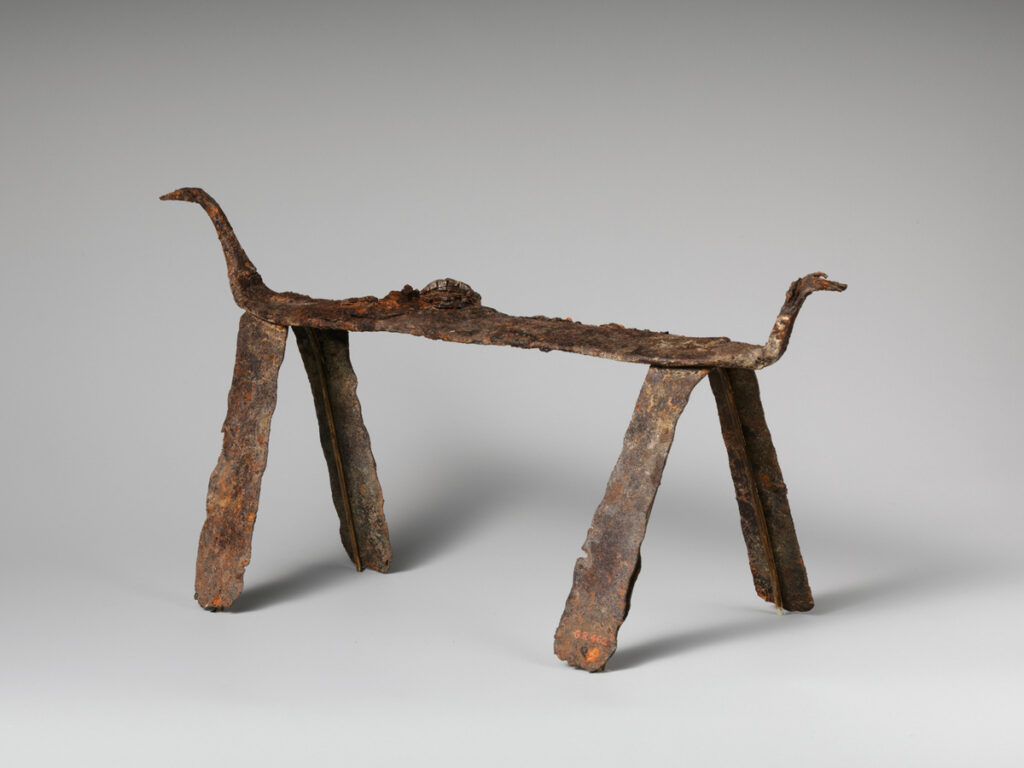
Exceptionally, some early andirons could be true artworks: the image below depicts the ‘Capel Garmon Firedog’ (circa 50BC–AD50), considered as one of the most important pieces of early decorative ironwork ever to have been found in Britain. Illustrating the skill and artistry involved in the working of iron during the Celtic Iron Age, the opposed animal heads (resembling both horses and cows) possibly represent mythical beasts. Such is the design’s intricacy that it’s estimated it may have taken over a year to make.
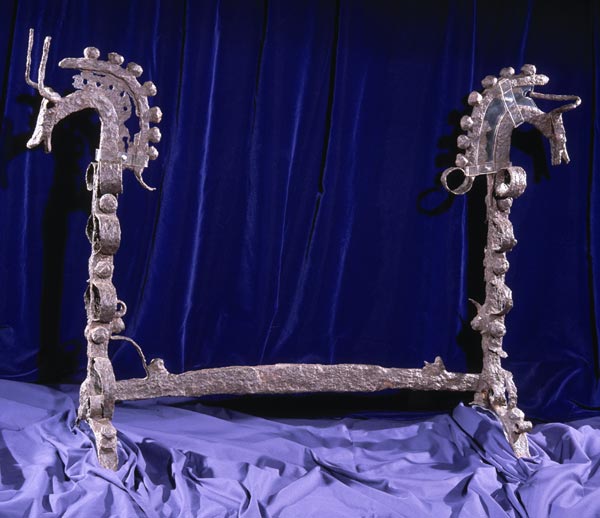
A renaissance
Andirons were not used in pairs until hearths moved from the centres of rooms to outside walls, and more sophisticated chimneys developed. Another key development came with the Italian Renaissance, spanning the fourteenth to the seventeenth centuries, when artists and designers began to take up and rework ordinary household objects. Andirons henceforth became status symbols, with the front vertical given increasingly decorative treatment. The use of privileged materials like brass, bronze, or silver, which allowed casting, increased the range of possibilities.
Andirons reached their greatest artistic heights under Louis XIV of France (1643–1715), when the guard (the andiron’s upright portion) became markedly more dramatic. Heraldic symbols, sphinxes, bizarre beasts, and mythological creatures now frequently graced their designs. Sometimes these andirons were named after the creature they portrayed – likely the reason for the term ‘fire dogs’, which in time came to stand for any andiron, regardless of its subject. Andirons were such accepted forms of decoration that even Jean Bérain, chief designer to the French court in the late seventeenth century, turned his hand to them. The great designers of the Louis XV and Louis XVI periods continued to contribute to what was the andiron’s eighteenth-century golden age, to the extent that the Versailles Palace and Petit Trianon contain a wide variety of them.
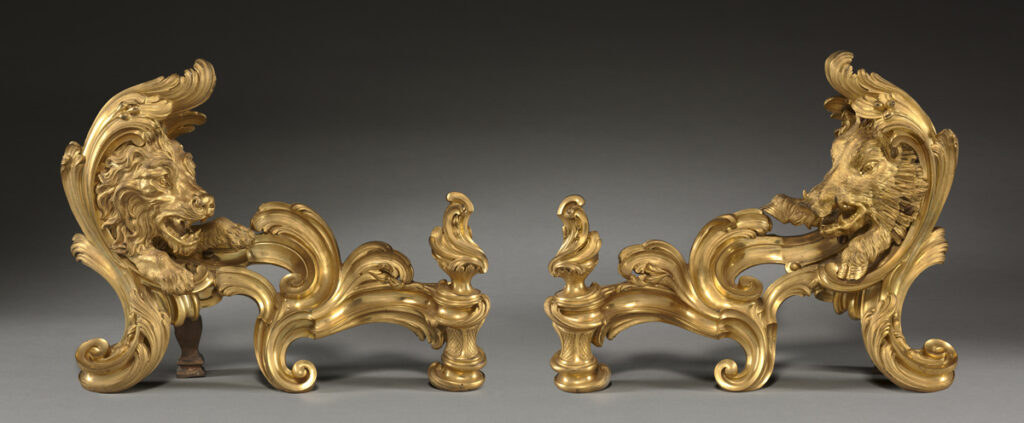
A cook’s companion
Over the centuries, andirons adapted to the practical needs of cooking over an open flame, continuing an age-old practice. Hooks on the andiron’s vertical supports meant that food could be strung on a spit and slowly roasted over a fire. Some designs featured a series of hooks at different levels, so the cooking intensity could be controlled; others came with bowls at the top in which food could be heated or kept warm. Plain andirons, or ‘cobirons’, with brackets for spits, were used in the kitchen – though cooking andirons could also be elaborate, as in the case of ‘bull head’ examples.
Typically, such cooking andirons were made of wrought iron, though still a mark of wealth, with the less fortunate using long, narrow rocks to keep fire from the floor.
By the eighteenth century, classical forms with several mouldings, akin to those used for candlesticks, began to predominate in middle class homes – and were also imitated in the American colonies in more simple form. As the century went on, fireplaces frequently featured built-in metal grates to hold firewood – or increasingly coal – off the floor, reducing the need for andirons. Yet they were still kept for decorative reasons, and sometimes as a place to store pokers, tongs and other fire implements.
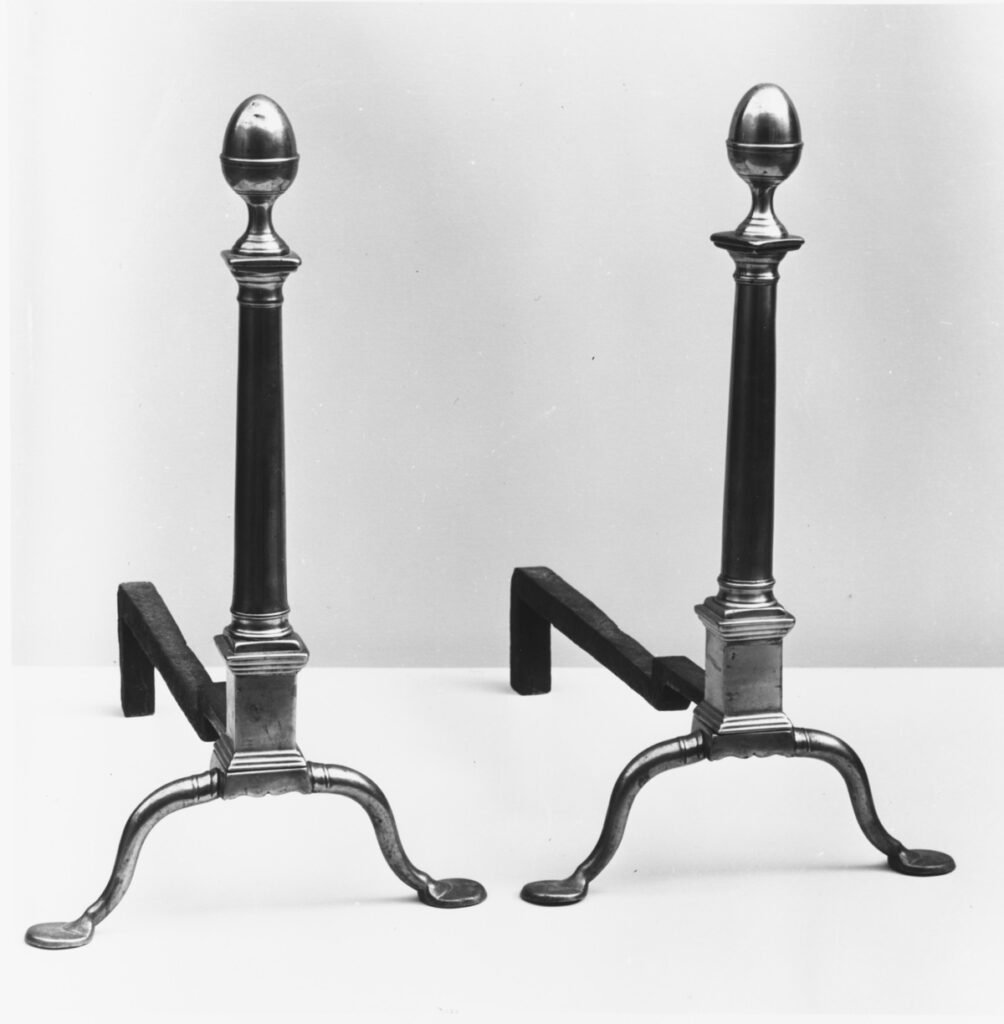
Andirons today
Design and fireplace companies continue to produce andirons today in modern, sleek finishes, or reviving styles from the past. There is also a thriving second-hand market, with antique examples, particularly in unusual shapes, going for many thousands of euros. Though few andirons feature the name of their makers, those created by celebrated designers can fetch vast prices: a pair of stretching-cat andirons by Armand-Albert Rateau, who created andirons for the fashion designer Jeanne Lanvin’s home, sold for €235,000 through Christie’s.
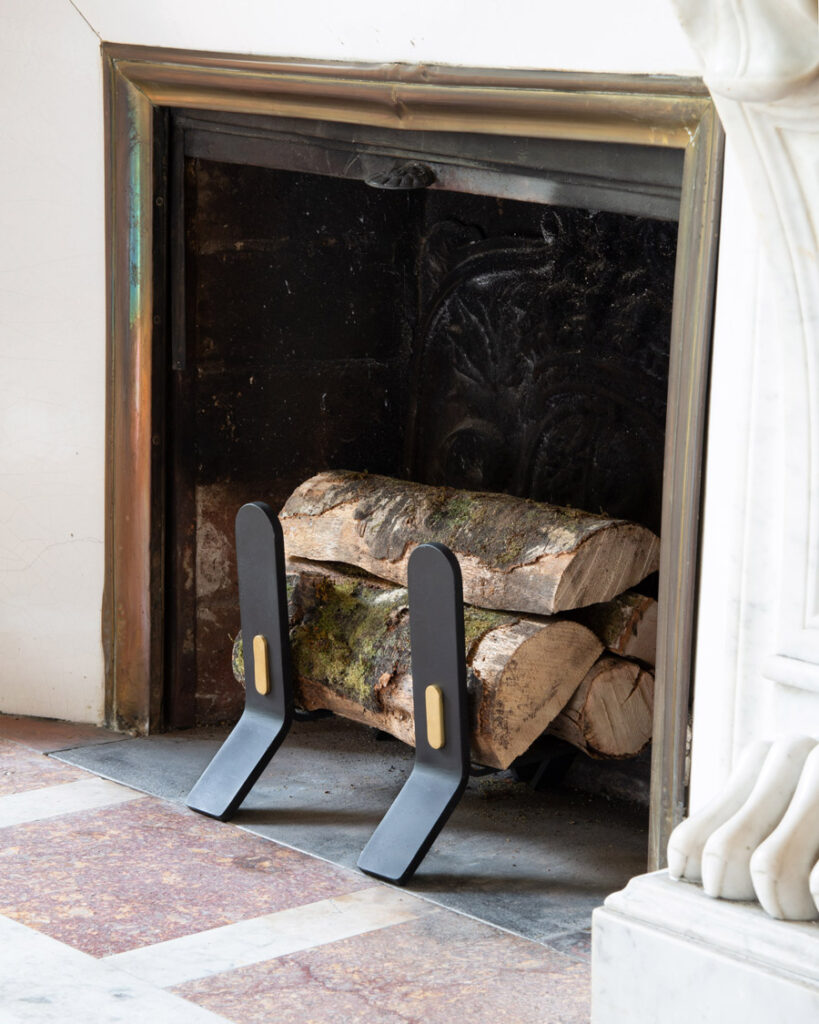
Eldvarm’s reimagined Andirons
Last year, we enlisted renowned designer and friend of Eldvarm, Charles Kalpakian, to reimagine the classic vintage cast iron andirons. The result was the Cooper Fire Dogs, a piece of elemental and functional design, emphasising material elegance. Available in two sizes, the smaller is tailored for city fireplaces, while the larger suits deeper country fireplaces. Cooper comes in two colours, Noir (charcoal black) and Lumière (stainless steel), both featuring Eldvarm’s signature brass detailing for an extra touch of refinement.

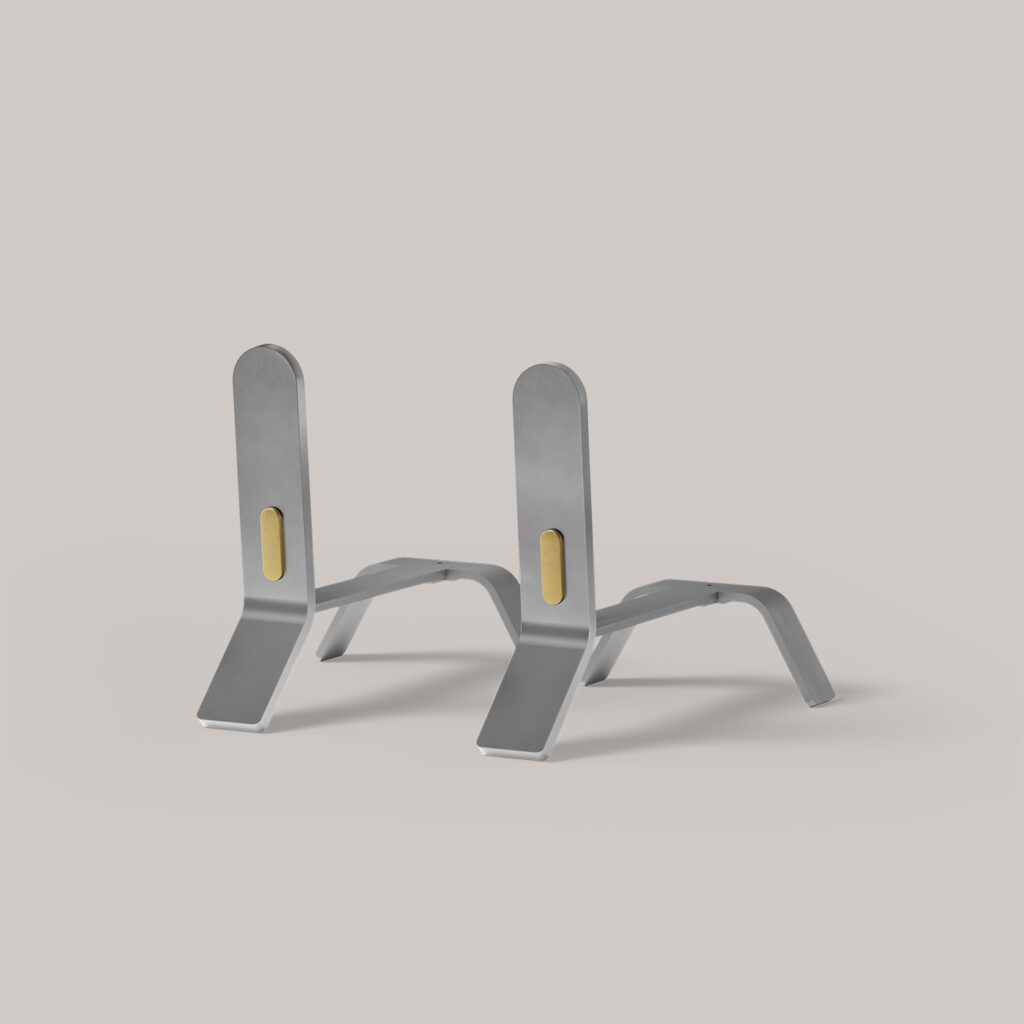
*Top Image: Pair of antique metal andirons | Photo: The Metropolitan Museum of Art


